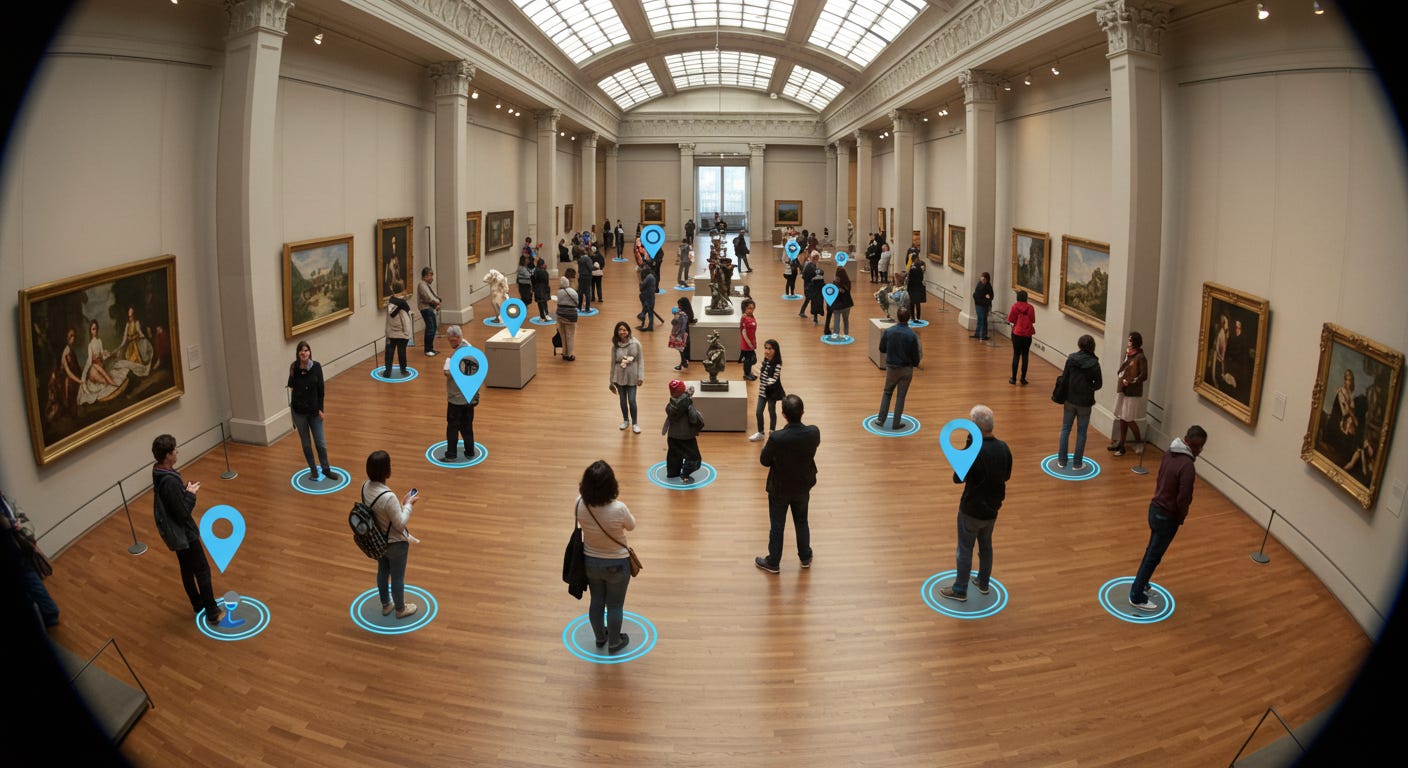There’s no question that Artificial Intelligence (AI) is already having an impact on securing art collections, and museums of all sizes must devote time to exploring the technologies already on the market.
Today, even medium-sized museums often have well over one hundred cameras in operation. Obviously, it’s impossible to monitor all of them at the same time, and the infrequency of events in the museum environment can lead to complacent or inattentive guards—especially when the museum is closed. However, if there wasn’t a risk associated with a certain location then there wouldn’t be a camera in the first place.
With AI-enhanced cameras, human monitors can be alerted in the control room, in the gallery, or both, when an identified risk emerges. Technology like Art Sentry “sees” when a person—innocent or otherwise—moves too close to a precious object. Museum security consultants universally agree that this technology is a one of the best practices recommended during museum security vulnerability assessments. We’re still in the early stages of this sort of tech, and we expect that the coming years will see drastic improvement in an already-valuable system.

We anticipate that the next important step in AI cameras—one that is on our doorstep—is software that will allow museum surveillance systems to learn the patterns of visitor behavior and alert guard staff in advance of individuals who require additional monitoring as they traverse the institution. This will provide security teams with intel about possible risks in real time.
In an industry known for high attrition among gallery guards, “experienced” cameras will be a great help in enhancing security.
AI can also be useful in identifying risks. Products like ChatGPT, Perplexity, Gemini, and others can answer complex questions on the topic and provide suggested solutions for complicated problems. In fact, the more intricate and detailed the question, the better the response.
For instance, a museum security leader might ask AI, “How to prevent art theft in a small museum” along with particulars about, say, the crime rate in the neighborhood, past incidents, police response times, and other important factors.
We would strongly advise against providing any identifying information about the institution, however, because questions gathered by these AI chats are not private and could eventually end up being used in ways the user does not anticipate. Moreover, none of these products are perfect and all responses should be carefully considered. Still, these are valuable tools for brainstorming and typically produce concepts and ideas that might not immediately come to mind.
Museum security professionals will be questioned about initiatives that include individual tracking systems and facial recognition, and each must be prepared to defend the systems in the face of privacy concerns or laws (depending on your country) and the political climate in the community and among leadership.
Some museums are already using AI biometrics like facial recognition. To others, such things are anathema. But museum security is, and will always be, an ongoing balancing act between access and protection. AI can be an important partner in keeping that balance.
Want more stories like this delivered straight to your inbox? Subscribe to our newsletter!
“Roses dans une Verre” by August Renoir
Stolen from the Musée Albert André in 1972
Recent
Helping Protect Masonic History and Heritage
Argus partner Catherine P. Foster recently conducted a security risk assessment at the Naval Lodge #4 in Washington, DC as part of the Washington Conservation Guild’s Community Partnership Project. We are proud to support the work of Lodge members and WCG conservators to preserve this historic collection.
Cultivating the Next Generation of Art Law Experts in Italy
Argus partner KT Newton recently returned from Paestum, Italy where she served as instructor for the academic course "Legal English for Art." The course was organized by English for Law and International Transactions, a school that offers training and specialty courses at various Italian universities including the Università degli Studi di Parma.
Closing Intelligence Gaps to Better Protect Art
Argus partner Catherine P. Foster spoke at a recent meeting of the ASIS International Cultural Properties Community. She discussed the driving forces behind protest vandalism against artworks and the factors that leave “soft targets” like museums and other cultural institutions vulnerable.
Argus Offers Art Law Primer to Future Art Industry Leaders
Argus partner KT Newton recently lectured for the Introduction to Art Business course at Sotheby’s Institute of Art in New York. As a recognized expert in this field, KT gave an overview of the U.S. laws related to art crime and presented numerous art theft case studies in which the objects were either recovered many years later or are still missing.
The Study of Art Crime at Harvard University
Argus partner Geoffrey Kelly and senior adviser Anthony Amore are currently teaching a course on “Art Crime: Investigations and Implications” for the Harvard University Extension School. This is the Xth year these experts have taught the course. Students explore the impacts of art crimes and the methods of investigating them through the use of real-world examples. The class runs through mid-May.
Upcoming
IMUA 94th Annual Meeting
We are excited to join a panel on “Fine Art: Insights and Expertise in Underwriting and Claims” at the annual meeting of the Inland Marine Underwriters Association in Bonita Springs, FL on April 15.
Blanton Live - Conversations for Now: Art Theft
Argus will lead a lively discussion on art theft cases, money laundering, authenticity, and the ethics of collecting at the Blanton Museum of Art in Austin, TX on April 27.
Artificial Intelligence (AI) in Museum Security Operations
Argus Founder and Managing Director Tim Carpenter will be keynote speaker at the “Guard Your Treasures” event in New York City on April 29 organized by Art Sentry and hosted by Axis Communications.















